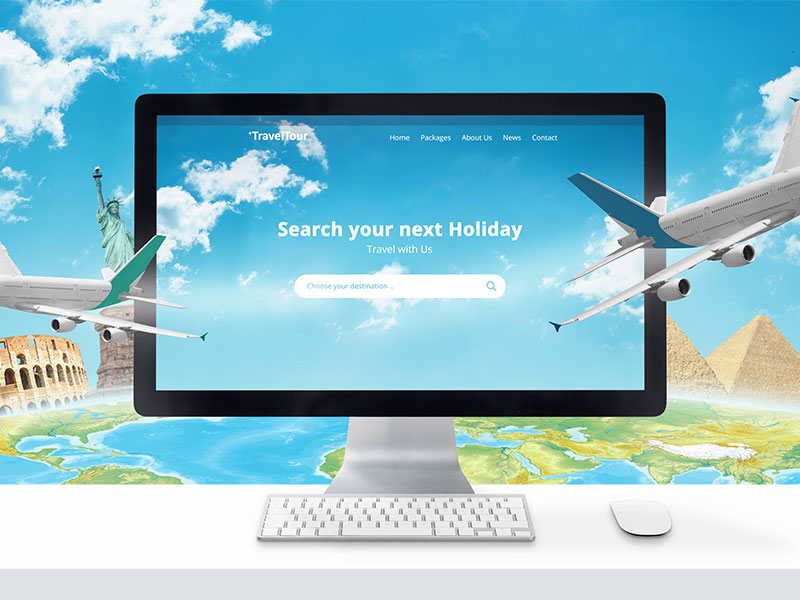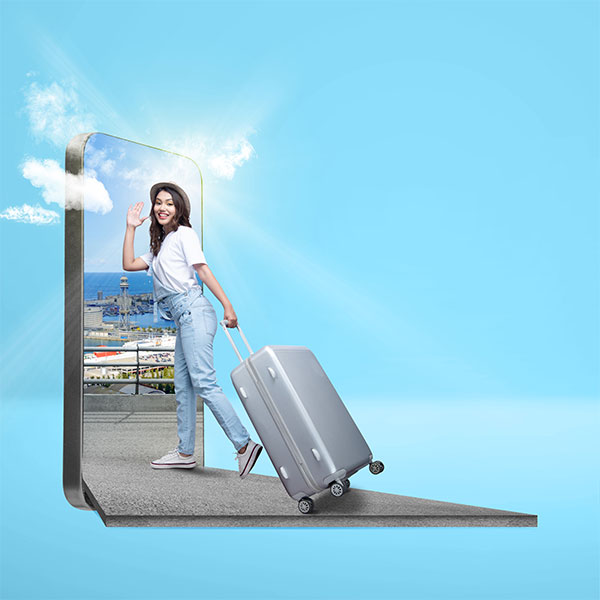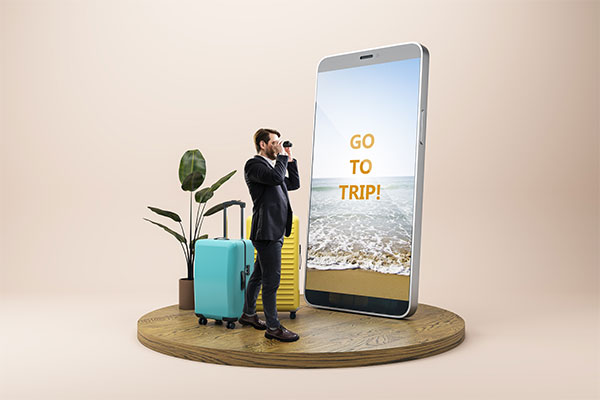
In the fiercely competitive travel industry, standing out requires more than a single-channel push. Today’s savvy marketers leverage multichannel travel advertising—a strategic blend of paid and organic touchpoints—to guide travelers from discovery to booking. By harmonizing Google Ads, social media campaigns, OTAs, video ads, SEO, and email marketing, brands can capture high-intent prospects at every stage of their journey, optimize budgets, and drive unprecedented returns on investment. This guide offers expert, actionable tips for balancing channels, allocating budgets, running rigorous A/B tests, and employing advanced attribution models, ensuring your travel promotions deliver maximum ROI and sustainable growth.
Understanding Multichannel Travel Advertising
Defining the Landscape
Multichannel travel advertising harnesses multiple marketing avenues—both paid and organic—to reach prospects across search engines, social platforms, video networks, booking sites, and owned channels. Rather than siloed campaigns, integrated strategies allow for touchpoint synergy, reinforcing brand messaging and guiding the traveler smoothly along the conversion funnel.
Key Channel Categories
- Paid Channels: Google Search & Display Ads, Facebook and Instagram Ads, YouTube Video Ads, OTA Promotions (Expedia, Booking.com), Programmatic Display.
- Organic Channels: Search Engine Optimization (SEO), Content Marketing, Email Marketing, Social Media Engagement, Content Partnerships.
Establishing Clear Objectives and KPIs
Before allocating budgets, define SMART objectives—Specific, Measurable, Achievable, Relevant, and Time-bound.
Common Travel Advertising Goals
- Direct Bookings: Increasing reservations on your website or app.
- Lead Generation: Capturing inquiry forms for customized packages.
- Brand Awareness: Boosting reach and brand recall in target segments.
- Upsell & Cross-Sell: Promoting ancillary services (tours, car rentals, insurance).
Essential KPIs
- Cost per Acquisition (CPA): Total ad spend divided by number of bookings.
- Return on Ad Spend (ROAS): Revenue generated per dollar spent.
- Click-Through Rate (CTR) & Conversion Rate: Engagement and effectiveness metrics.
- Customer Lifetime Value (CLV): Projected revenue from repeat travelers.

Balancing Paid and Organic Channels
Achieving an optimal mix of paid and organic channels is crucial. While paid ads yield immediate visibility, organic strategies build equity and reduce long-term acquisition costs.
Paid Channel Allocation
- Google Search Ads (30–40% of budget): High-intent targeting for flight, hotel, and package queries. Use branded and non-branded keywords with exact, phrase, and broad match modified types.
- Social Media Ads (20–30%): Visual storytelling on Facebook, Instagram, and TikTok. Carousel ads highlighting destination experiences and lead gen forms for inquiries.
- OTAs Promotions (10–15%): Sponsored listings on platforms like Expedia and Booking.com to capture comparison shoppers.
- Video Ads (10–15%): YouTube TrueView and In-Stream ads for top-of-funnel engagement. Showcase immersive destination footage and clear CTAs.
Organic Channel Focus
- SEO (20–25% of total marketing effort): Optimize on-page elements, build high-quality backlinks, and target long-tail keywords (e.g., “family vacation packages Bali”).
- Content Marketing: Publish destination guides, travel tips, and user-generated stories on the blog. Leverage pillar-cluster strategies to dominate thematic search queries.
- Email Marketing: Nurture leads with personalized itineraries, dynamic content blocks for abandoned searches, and exclusive subscriber offers.
- Interactive Exercise: Evaluate your current channel mix. Which channels underperform based on CPA and ROI? How can you adjust budgets to prioritize high-return avenues?
Visit: data driven marketing for travel bookings
Smart Budget Allocation Strategies
Budget allocation should be data-driven and flexible, adapting to seasonal demand and campaign performance.
Rule of 70-20-10
- 70% Core Campaigns: Proven, high-ROI activities (branded search, remarketing).
- 20% Growth Experiments: New ad formats or lesser-used platforms (LinkedIn, Snapchat).
- 10% Innovation: Emerging technologies (AR ads, AI-driven dynamic creative).
Seasonality Adjustments
Travel peaks (summer, winter holidays) require front-loading budgets into high-intent search and remarketing. Off-season, shift focus to branding and content to maintain engagement at lower CPCs.
Geo- and Segment-Based Budgeting
Allocate higher budgets to regions or segments with historically higher conversion rates—business travelers on Google Ads during weekdays; leisure travelers on Instagram ads during weekends.

A/B Testing and Creative Optimization
Rigorous testing is the cornerstone of performance gains.
Test Variables
- Ad Copy & Headlines: Experiment with emotional triggers (adventure, relaxation) vs. rational appeals (discounts, convenience).
- Visuals & Video Thumbnails: Compare user-generated content vs. professional imagery.
- CTAs: “Book Now,” “Get a Quote,” “Explore More” to identify highest clickers.
- Landing Pages: Variations in layout, messaging hierarchy, and form length.
why online reviews for business
Testing Methodology
- Statistical Significance: Aim for 95% confidence before scaling winners.
- Test Duration & Sample Size: Run tests for at least two sales cycles or until reaching adequate impressions.
- Iterative Testing: Implement winner, then test the next variable—avoid simultaneous multi-variable tests unless using multivariate tools.

Attribution Models for Booking Tracking
Accurate attribution illuminates which channels truly drive conversions.
Common Models
- Last-Click Attribution: Attributes 100% credit to the final click before booking—simple but may undervalue upper-funnel ads.
- First-Click Attribution: Gives credit to the initial touchpoint; useful for evaluating awareness campaigns.
- Linear Attribution: Distributes credit evenly across all touchpoints.
- Time-Decay Attribution: Assigns more weight to interactions closer to the conversion.
- Data-Driven Attribution: Uses machine learning to allocate credit based on historical performance data.
Choosing the Right Model
For direct bookings, consider time-decay or data-driven models to value remarketing and search properly.
For long-consideration travel purchases, linear or position-based models (40-20-40 rule) can balance awareness and conversion channels.
Quick Quiz: Which attribution model would best showcase the impact of upper-funnel video ads in driving awareness-driven bookings?

Cost-Effective Tactics: Dynamic Ads and Remarketing
Dynamic Ads for Flights and Hotels
- Dynamic Search Ads (Google): Automatically target queries based on website content, ideal for a large inventory of flights or properties.
- Dynamic Remarketing (Display Network & Facebook): Show ads featuring the exact hotels, destinations, or packages users viewed, increasing relevancy and conversion rates by up to 50%.
Segmented Remarketing Strategies
- Cart Abandoners: Customized incentives (free cancellation, room upgrades) to nudge completion.
- Engaged Browsers: Show alternative destinations or similar price-point options.
- Past Bookers: Promote loyalty programs and cross-sell ancillary services (tours, transfers).
Targeting High-Intent Segments
Precision targeting amplifies efficiency.
Segment Profiles
- Family Vacationers: Emphasize safety, family suites, kid-friendly activities; target via Facebook interests (parenting groups) and Google affinity.
- Business Travelers: Highlight corporate rates, express check-in, Wi-Fi speed; target via LinkedIn ads and Gmail Sponsored Promotions.
Lookalike and Similar Audiences
Leverage CRM data to create lookalike audiences on Facebook and similar audiences in Google Ads—expanding reach to users with matching behaviors and interests. Looking to amplify your returns with multichannel travel advertising? Partner with the best digital marketing agency in India for tailored strategies that maximize ROI!
Leveraging Organic Channels for Complementary Growth
SEO for Travel Brands
- Technical SEO: Ensure site speed, mobile responsiveness, and structured data for rich snippets (hotel price, availability).
- Content Pillars: Develop in-depth guides (e.g., “Top 10 Eco-Friendly Resorts”) with internal linking to package pages.
- Local SEO: Optimize Google Business Profiles and location pages for “near me” searches.
Email Nurturing Sequences
- Segmented Campaigns: Separate subscribers by stage—newsletter readers, price-alert signups, past bookers—and tailor content accordingly.
- Dynamic Content Blocks: Showcase personalized recommendations based on browsing behavior or past stays.
- Triggered Emails: Send follow-ups for abandoned searches, price drops, and post-stay feedback requests.
Continuous Monitoring and Strategic Iteration
Performance monitoring ensures budgets adapt to real-time data.
Dashboard Essentials
- Unified View: Consolidate data from Google Ads, Facebook Ads Manager, OTA dashboards, and analytics into a single BI platform (e.g., Data Studio, Tableau).
- Core Metrics: ROAS, CPA, booking volume, average order value, and attribution-based channel contributions.
Regular Performance Audits
- Weekly Checks: Pause underperforming ads, reallocate budgets to winning segments.
- Monthly Deep Dives: Evaluate overarching trends—seasonality, competitor shifts, emerging channels—and adjust strategies.
Visit: best remarketing strategies
Conclusion
Mastering multichannel travel advertising demands strategic balance, data-driven budget allocation, and relentless optimization. By harmonizing paid channels—Google Ads, social media, OTAs, and video—with robust organic efforts like SEO and email, travel brands can engage high-intent segments, lower acquisition costs, and drive sustainable growth. Implement advanced attribution models, dynamic ad tactics, and segmented remarketing to capture every opportunity. Continuous A/B testing, performance audits, and iterative refinements ensure your campaigns evolve alongside traveler behaviors and market trends. Embrace these expert tips to unlock the full potential of multichannel travel advertising and secure maximum ROI for your campaigns.
Share Your Project Requirements With Us






